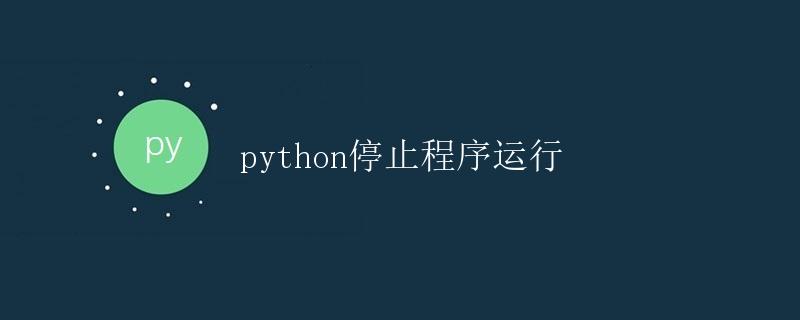Python停止程序运行

在编写Python程序时,有时候我们可能需要在特定条件下停止程序的运行。这可以通过一些方法来实现,比如使用sys.exit()函数或者抛出一个异常。在本文中,我们将详细讨论如何在Python中停止程序的运行。
使用sys.exit()函数
在Python中,sys.exit()函数可以用来停止程序的运行并返回一个指定的退出码。这个函数位于sys模块中,因此,在使用之前需要先导入这个模块。
下面是一个简单的示例,演示了如何使用sys.exit()函数停止程序的运行:
import sys
def stop_program():
print("Stopping the program...")
sys.exit(0)
# 主程序
print("Starting the program...")
stop_program()
print("This line will not be executed.")
在上面的示例中,当调用stop_program()函数时,程序会打印”Stopping the program…”,然后停止运行,不会执行最后一行的代码。sys.exit()函数的参数是一个整数,通常用来表示程序的退出状态。习惯上,0代表程序正常退出,非零值代表程序出现了异常。
运行上面的代码,输出如下:
Starting the program...
Stopping the program...
抛出一个异常
除了使用sys.exit()函数之外,我们还可以通过抛出一个异常来停止程序的运行。Python中有许多内置的异常类型,比如KeyboardInterrupt、SystemExit等,我们可以选择合适的异常类型来终止程序的执行。
下面是一个示例,展示了如何抛出一个KeyboardInterrupt异常来停止程序的运行:
def stop_program():
print("Stopping the program...")
raise KeyboardInterrupt
# 主程序
print("Starting the program...")
try:
stop_program()
except KeyboardInterrupt:
print("Program stopped by user.")
在上面的示例中,当调用stop_program()函数时,程序会打印”Stopping the program…”,然后抛出一个KeyboardInterrupt异常,程序会在try块中捕获这个异常并输出”Program stopped by user.”。
运行上面的代码,输出如下:
Starting the program...
Stopping the program...
Program stopped by user.
结论
在Python中停止程序的运行有多种方法,其中常用的包括使用sys.exit()函数和抛出异常。选择合适的方法取决于具体的情况和需求。在结束程序时,我们应该尽量保持程序的整洁和可读性,避免出现意外的错误和异常情况。
 极客教程
极客教程